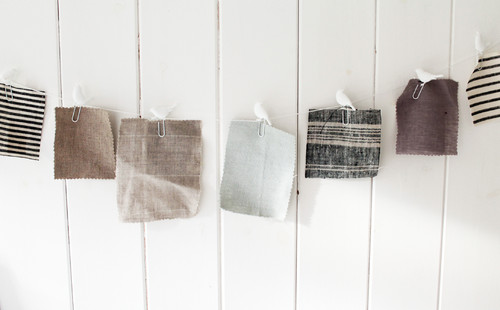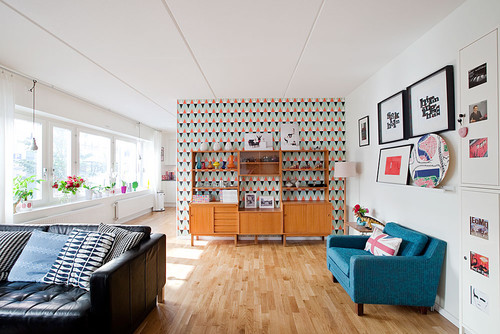Making the Most of a Winter Farmer’s Market


Winter’s chill is in the air and spring is still several weeks away, but there’s plenty to do in your hometown during the colder months including checking out a winter farmer’s market.
Traditional farmer’s markets usually run from early spring to late fall, but there’s a growing trend popping up in cities across the country: the winter farmer’s market.
Typically your local winter farmer’s market is held indoors, which means no matter the weather, you can still shop in comfort for your favorite offerings of the earth’s bounty.
Want to make the most of your next visit to a winter farmer’s market? Here’s what you need to know:
Manage Your Expectations
When strolling around your favorite farmer’s market during warmer months, you’re likely to find all sorts of bright, juicy fruits and beautiful growing plants. The purpose of a farmer’s market is to help connect local farmers and producers with the community, as a source of great seasonal offerings.
Your winter farmer’s market likely won’t have the same options as the markets held in spring and summer. This is mainly because those fruits and vegetables aren’t being grown or harvested during colder months.
Depending on the size of your market and where you live, it might not be possible to do all your grocery shopping at your neighborhood winter farmer’s market, but you should be able to check several items off your shopping list.
Think Outside the Box
Winter farmer’s markets are a great opportunity think outside the box, with regard to the produce you buy. There you may come across different varieties of your favorite fruits and vegetables, or different options altogether.
Take this as a chance to try something new! Never cooked with baby bok choy or purple potatoes? These are some delicious choices, and likely to be spotted at a winter farmer’s market.
And make sure you talk to the farmers or sellers about their wares. They are likely to be a wealth of free information for you. For example, if you usually cook with cilantro in the spring and summer, ask the farmer to recommend another herb you might try when it isn’t available.
Ask the farmer if he or she has a favorite way of preparing the veggies or a tip for making fruit last longer. This is your chance to talk directly with the expert about his or her produce.

Stock Up on Essentials
Whether you are a dedicated home cook or someone who just enjoys trying a new recipe every now and again, there are certain essentials that a well-stocked kitchen must have.
Often a winter farmer’s market is a great place to find things like local honey, spices and jams or preserves. It never hurts to have these pantry staples on hand. Plus, you’ll feel great knowing you are supporting the livelihood of local growers and producers.
Since these types of items are usually canned or dried, they have a longer shelf-life and will serve to be very useful for all your culinary creations until spring arrives.
You might also see cut flowers or winter plants. Depending on the type, winter is often a good time for planting. Some farmers also sell or swap their seeds, especially heirloom varieties, so make the most of this opportunity to stock up for your spring and summer garden.
Give the Gift of Local Made with Love
Winter farmer’s markets are often more than just farm fresh produce and things grown in the ground. There will likely be offerings and wares for sale by local artisans and makers.
From handcrafted jewelry and pottery to unique and one-of-a-kind art or woodworking, these selections make wonderful gifts for friends. Other items you might find include essential oils, handmade soaps and lotions, and natural cosmetics. Sellers will often allow you to sample their wares in order to see what you might like.
These are just a few ways you can enjoy a winter farmer’s market in your neighborhood. Before too long, spring will arrive with all its blooming beauty. But until then, it’s nice to know there are still some fun things to do to make the most of winter.
Source: CB Blue Matter Blog
Moving Day: Five Simple Ways to Reduce Waste & Save Green


The start of a new year brings the same old resolutions: get organized, get in shape and eat healthier. What if we all look beyond ourselves and add find new ways to be kinder to Mother Earth to our list? The impact would be pretty fantastic, a re-energized movement to preserve our one and only beautiful earth.
One simple way to fulfill that resolution is to be eco-conscious on moving day. Moving is one of the most wasteful times in a household. We finally get around to cleaning out those over stuffed closets, basements and garages. It’s the time we toss out those old clothes, electronics, magazines, bikes, etc. On top of the major weeding out of our belongings, we use tons of boxes and packing materials; and create piles and piles of waste that contribute to our landfills. Let’s just face the fact: moving time equals major trash time.
The great green news is there are simple steps you can take during a move to reduce your waste. Being eco-conscious on moving day will save you some green in your wallet too!
Follow these 5 steps to make Mother Nature & your wallet proud:
Use Eco-Friendly Moving Supplies
From boxes, packing paper to bubble, there are now green 100% recyclable materials to keep our neighborhoods cleaner and greener. Yep, there is even biodegradable eco-bubble, pop away guilt free.
ECO-BONUS: Save money by asking your moving company for used boxes made of recyclable materials. You can get used boxes at a discount and some moving companies will even give you a refund for returning your used boxes at the end of your move. Pop! Pop! Cha-ching!
It’s Not Just for the Movies
Instead of the foam popcorn and peanuts, use real popcorn to pack fragile items! Just pop and fill the gaps in your boxes to secure and pad fragile items. Cheap and earth friendly!
Give Back
Finally, the garage and closets actually are getting cleaned out. Hurray! Now is the time to get rid of what you don’t really need: the growing collection of tuna and soup cans in the pantry; the many, many sport teams t-shirts; go-go boots; your 10 year old’s toddler clothing, etc. But, don’t just toss them out. Donate unwanted furniture to the Habitat for Humanity Restore and clothing and household items to your local favorite charity such as Goodwill for someone else to enjoy.
ECO-BONUS: Reuse your moving boxes to donate your items. Simply visit GiveBackBox.com to learn how to use your used boxes to ship your donations off to a charity. Lastly, if you have any unopened leftover food on moving day, donate it to Move For Hunger. Don’t forget to keep your moving and donation receipts to save green on your taxes next year!
Be Kind to Your Electronics
You may no longer want your lemon-yellow microwave, but don’t just put it on the curb or throw it in a dump. If you do, it will likely be shipped off to unregulated third world environmental disaster dumping grounds instead of being recycled in facilities that follow U.S. environmental regulations. Contact a domestic e-waste recycler so your old computers, microwaves and other electronics are recycled domestically, under environmental laws, rather than being shipped off to be processed by highly toxic and polluting techniques.
Hire an Eco-Conscious Moving Company
Use your “green” to influence and encourage green habits by hiring companies that use environmental-friendly practices. Make sure your moving company is bright green by asking: Does the staff recycle? Are the offices and warehouse designed to be energy efficient? Do they use biodiesel to run their trucks? Do they use 100 % recyclable materials? Do they sell used boxes? Do they buy them back at the end of the move? Chances are if they care about the earth, they care about their customers too! It’s a great big green win – win!
Pat yourself on the back; you’re making Mother Earth smile and future generations will thank you!
Laura McHolm is an organizational, moving & storage expert and co-founder of NorthStar Moving Company. NorthStar Moving Company is an award winning, “A+” rated company, which specializes in providing eco-luxury moving and storage services.
Source: CB Blue Matter
Spring Selling Checklist

 With the early spring selling season kicking off shortly after the new year, it’s time to give your home the boost it needs to meet today’s buyers’ expectations. Take advantage of being inside during the cold winter months with these quick fixes that will help your property stand out from the competition, boost its value and sell quickly.
With the early spring selling season kicking off shortly after the new year, it’s time to give your home the boost it needs to meet today’s buyers’ expectations. Take advantage of being inside during the cold winter months with these quick fixes that will help your property stand out from the competition, boost its value and sell quickly.

Family Room Staged by PJ & Company Staging and Interior Decorating
Declutter & Organize
Start tackling one room at a time by packing up anything that will distract buyers from seeing the unique features of your property such as personal collections, family photos, newspapers, books and magazines. Rearrange and remove excessive furniture to simplify and make the room appear larger.
Make Basic Repairs & Updates
Make sure everything is in good working condition. Repair and replace broken light switches, bulbs, ceiling fans, door knobs, leaky faucets, shower heads, windows, thermostats, etc. Update lighting fixtures with contemporary styles and consider replacing older kitchen appliances with sleek, eco-friendly models to capture young buyer interest.

Bedroom Staged by PJ & Company Staging and Interior Decorating
Refresh and Brighten With Paint
Remove wallpaper and cover bold wall colors with a fresh coat of neutral paint to set the perfect backdrop for simple, updated styling. Give older style kitchen cabinets or wood vanities an instant facelift by covering with bright white or dark espresso paint. Then pair with knobs and drawer handles in brushed nickel or satin brass for an elegant finishing touch.
Fresh Flooring
There is nothing that dates a room more that worn, soiled carpeting. Remove and/or replace carpeting to reveal hardwood flooring underneath to instantly brighten and make the room feel more spacious. There are also many budget-friendly, easy to install options on the market now for replacing damaged flooring such as laminate and vinyl that look and feel just like wood.

Mudroom Remodel by PJ & Company Staging and Interior Decorating
Add Storage Options
Today’s buyers are looking for plenty of storage. Added storage solutions such as built-in bookshelves, window seats with storage underneath, entry storage units, and extra closet hooks and rods are a practical way to attract immediate buyer attention.
Partner With a Pro
Consult with a professional stager who will have an objective eye and knowledge of what appeals to today’s sophisticated buyers. They will provide a range of solutions for enhancing your home showings by recommending everything from furniture placement to wall color to complementary modern accessories to add clean, welcoming style.
For more examples of interior decorating and home staging, visit www.pjstagingdecorating.com.
Patti Stern, principal, interior decorator and professional stager of PJ & Company Staging and Interior Decorating, has been decorating and staging homes since 2005. She and her team provide turnkey, full service home staging and interior decorating to clients across Connecticut, New York and Massachusetts. Her company has received Houzz 2015, 2016 and 2017 Awards for Customer Service.
Patti has been featured in Connecticut Magazine, the Hartford Courant, Danbury News-Times and on NBC Connecticut and FOX TV. She is a regular contributor to the National Association of Realtor’s Blog, “Style, Staged and Sold.”
For more information, contact Patti Stern at 203-640-3762 or patti@pjstagingdecorating.com
Architectural Styles on the Horizon


Whether you’re buying, selling or staging a home, popular architectural styles and buzz-words can help you get the most out of your investment. Current and upcoming homebuyers have an “instant” mindset, are debt-savvy, and want all the luxuries of rural living in growing cities. Trending architectural styles, like shipping container and tiny homes, reflect the budget-friendliness and fast construction new homeowners want. Contemporary glass structures, modern farmhouse, and a Spanish-colonial revival make way for bigger homes and budgets.
Shipping Container
These days, building your own home is as easy as clicking around on a website or flipping through a catalog, mixing materials and adding desired features. The architecture that results is a Lego-like, innovative blend of textures and shapes that is “unique” to the homeowner’s preferences and taste. These styles are known as shipping container style homes. Some simulate the appearance of or incorporate actual shipping container material in their textures. By selecting from pre-fab, mix and match elements, homeowners can be sure that these features are ready-to-go. They can get exactly what they want without wasting time or resources.
Tiny Home
Floor plans for both homes and apartments are getting smaller and smaller as the demand for land goes up and urban populations boom. Architects and builders are getting creative with their designs, finding new ways to make the most out of spaces as small as 300 square feet. This is “tiny home” size. These homes often sell at a lower price point than traditional-size homes, which makes the investment easier for modern homebuyers who are grappling with significant loan debt. These designs make the most out of every square inch with hidden storage, multi-use rooms and concepts like open space and indoor-outdoor living.
Santa Barbara
3927 Laguna Blanca Dr., Santa Barbara, CA listed by Linda Lorenzen with Coldwell Banker Residential Brokerage
One of the most desired builds, right now, is the Santa Barbara style of architecture. This involves white stucco walls, wood beam ceilings and red tile roofs. It gets its name from the Spanish Colonial style that boomed in Santa Barbara in the early 1900s. The city set the trend for the rest of the country and homeowners are finding that the aesthetics of this style are a top choice for their dream homes.
Modern Glass
Homeowners are knocking out walls and replacing them with glass doors and walls to see through to their back yards or patios. Incorporating the outdoors into indoor spaces is a top trend, right now. With the glass features, homeowners tend to blend sleek materials like concrete or wood. Modern glass style homes allow the outdoors to flow into the indoors and vice versa. This is a great trick to make the most of your property.
Updated Farmhouse
4576 Atwood Road Stone Ridge, NY listed by Cathy Pulichene with Coldwell Banker Village Green Realty
The farmhouse style has been a long-standing architectural icon. However, these days, the style is changing to incorporate more modern elements. The result is known as the modern farmhouse. In many builds, the design begins as a modern home outfitted with rural accents like barn doors and farmhouse siding. For builds that begin in the farmhouse style, modern colors and mixed industrial textures bring the old into the new.
If you are considering a new construction, an architect can help you to stay on top of the trends so that your home will be a success on the market well into the future. According to HomeAdvisor, the average cost to hire an architect is $5,000. They can guide you through the process to help maximize on your time and resources.
Lauren White is a freelance writer who enjoys reading, hiking and traveling. She can usually be found on an outdoor adventure with her boyfriend and little sister on the weekends.
Source: CB Blue Matter Blog
Blue is Winning

 What color are first place ribbons? That’s right — they’re blue. That means blue is the official color of winning, and it also happens to be the official color of Coldwell Banker, the real estate brand who is #1 in dollar sales volume. Coincidence? We think not.
What color are first place ribbons? That’s right — they’re blue. That means blue is the official color of winning, and it also happens to be the official color of Coldwell Banker, the real estate brand who is #1 in dollar sales volume. Coincidence? We think not.
Ready to perform like a champion? Visit coldwellbanker.com/careers and see what it feels like to be on the winning team.
Source: CB Blue Matter Blog
The Power of Social Media in Real Estate


Whether you’re buying or selling, social media plays a big role in today’s real estate market, providing connections, content and commerce.
Did you know that Coldwell Banker is the #1 most influential real estate brand on social media according to Klout? At Coldwell Banker we empower our agents to use social media marketing as a supplement to traditional tactics. From lifestyle content to highly targeted Facebook ads to get listings in front of qualified buyers, our agents are marrying their local knowledge with the power of social media to make them the best in the business – and to help get their clients’ homes sold faster.
In a recent episode of NBC Open House, we sat down with Alexandra Filiaci, Social Media & Content Manager for Coldwell Banker, Roman Novian with Coldwell Banker Jim Stewart, Realtors and Dave Pardo with Coldwell Banker The Real Estate Group, three members of the Coldwell Banker Social Squad to hear how social media plays a role in their business.
Ask your Coldwell Banker agent about how social media platforms like Facebook and Instagram will play a part in the marketing of your home. To find the right agent, visit coldwellbanker.com.
Hey Google – What’s New in Smart Home?

 Google was everywhere at this year’s CES. From billboards over the strip to branded monorail cars to a large outdoor booth in Central Plaza, you couldn’t take more than a few steps without seeing or hearing “Hey Google.” Our Blue Crew got a private tour of the Google Booth at Central Hall. Check out the video below to learn what real estate professionals need to know about Google Home.
Google was everywhere at this year’s CES. From billboards over the strip to branded monorail cars to a large outdoor booth in Central Plaza, you couldn’t take more than a few steps without seeing or hearing “Hey Google.” Our Blue Crew got a private tour of the Google Booth at Central Hall. Check out the video below to learn what real estate professionals need to know about Google Home.
If you’re already affiliated with Coldwell Banker and want to learn more about our Smart Home initiative, visit CB Exchange and search “Smart Home.”
If you would like to know what Coldwell Banker agents have access to, head to coldwellbanker.com/join and explore the possibilities of moving your business to Coldwell Banker.
Source: CB Blue Matter Blog
Best of CES: Smartest Home Improvements for 2018


The 2018 Consumer Electronics Show was one for the books. This was my fourth year going and my biggest takeaway was that smart home tech is evolving at break neck speeds. The smart home show floor was massive and each category from security to entertainment is getting saturated with truly amazing concepts and products. Here were some of our absolute favorites in case you missed them…
In addition to all of the awesome items mentioned above, here were even more of our favorite smart home improvements…
Improving Your Smart Home’s “Brain”
What is the biggest downfall of smart home tech? To me, it is often the lack of one streamlined operating flow. With a ton of different apps and operating systems sometimes smart home tech can actually feel a little dumb.

The good news? At this year’s show it seemed like almost every single product integrated with Amazon’s Alexa or Google’s Home product. So the first smart home improvement you should make is picking one of these systems and finding products that sync with them. Which one is better? According to Forbes, Amazon is winning the race.
Improving Your Garage (and mental health)
Did you shut it?
Did you?
I can’t remember.
I’m pretty sure you did.
I am turning around…I have to check.
Have you had this conversation with their significant other or perhaps even yourself about your garage door? We have it at a few times a month at my house. That is why the Roost Smart Garage Door Sensor made my list. With a combination of home protection and peace of mind, this WiFi connected door sensor sends you a notification telling you if your door in open or closed. The biggest drawback though? If you did leave it open there is nothing it can do for you. Still a great product for those who get open door anxiety like me! Roost also has some other cool smart home devices you can learn about here.

This will be available sometime in the spring and will be priced at $40.
Improving The Safety In An Elderly Person’s Home
I believe there is no price you can place on the safety of a loved one. Especially when it comes to the safety of an elderly parent. If you
Improving Your Home’s Cleanliness
Over the past few year’s robo vacuum cleaners have gained popularity with products like the Roomba. If you enjoy having one (or have one on your wishlist) I have a feeling you’re also going to love the Cop Rose Window Cleaning Robot. Window cleaning is a tedious task and if you have pets or small children, it can feel like a never ending chore with little hand and nose prints everywhere you turn. This smart window cleaner will keep windows, as well as other vertical surfaces, in tip top shape with a touch of a button from your smart phone. It can also be used floors and walls.

At $150, this product is a great way to avoid one of most dreaded household chores. More information here.
Improving Your Home Gym
Peloton has already built a cult like following around their bike product and and now they’re hoping to do the same around their new treadmill called the Peloton Tread. The fancy treadmill is equipped with a 32 inch touchscreen display that allows the runner to stream classes in a studio like setting from NYC’s best instructors.

The Peloton Tread comes with a hefty price tag at $4,000 PLUS an additional $39 monthly fee for live classes. It will start shipping this fall but you can reserve one now.
Bonus Product: Improving Your Kitchen Gadget Collection
While this isn’t technically a smart home improvement I couldn’t help but share one of my personal favorites from the show which was the Coravin Model 11. Have you ever wanted to drink just one glass of wine but passed because you didn’t want to ruin the bottle? The model 11 allows you to enjoy a glass without ever removing the cork or damaging the wine itself. This “first ever” fully connected automatic wine preservation opener works by placing a super thing needle through the cork. Check it out:
Like the Peloton Treadmill, this item comes with a large price tag at $1,000 but if you are serious about your wine then this is totally worth it splurge.
Source: CB Blue Matter Blog
The Good and the Bad of DIY Lawn Care

 When you have your own home and are responsible for your lawn care, should you do it yourself? There are two sides to DIY, good and bad. On the bad side first, if you don’t know what you’re doing, there can be consequences. But you could consider it as a learning experience too, and it will save you money.
When you have your own home and are responsible for your lawn care, should you do it yourself? There are two sides to DIY, good and bad. On the bad side first, if you don’t know what you’re doing, there can be consequences. But you could consider it as a learning experience too, and it will save you money.
What pros and cons would a homeowner face in this consideration?
The Pros
- You’ll save money with DIY lawn care, sometimes the extra cost of a professional can be expensive. If you’re on a tight budget, it might not be possible to hire one anyway. In fact, the average price for a single lawn mowing service is $43 per service, according to LawnStarter Lawn Care.
- Mowing grass is excellent exercise, and you’ll work up a sweat in no time; especially if you’re using a walk behind mower. Yes, the mower does do a lot of the work, but you still have to hold on to it and guide it. Plus, you have the troublesome spots on the unlevel areas. But it gives you a great workout!
- Many homeowners take pride in caring for their lawn themselves. They know where each patch of crabgrass is and where the last dandelion is hiding. They take pride in the beauty of their green yards and interesting gardens that add so much beauty.
- It encourages interaction with your neighbors as you discuss the best fertilizer and lawn care products. Plus, saying can you help with my brown spot and do you have moles too?
- You will notice more easily things that need your attention. You will find that hole behind a bush that the dog dug trying to escape. Or, whether it’s time to dethatch the lawn or can it wait another week.
- If your lawn is thick, it will need dethatching to permit the grass to breathe. Instead of racking your back though you can rent or buy a power dethatcher. This you can do yourself with very little help except for the raking up of the debris.
- You have more control over how high you want your to be grass mowed. When the temperature starts to rise, the height of your lawn should too. When you mow too low, then you’re opening up the possibility of weeds because weeds need light to sprout. If you have a kid from down the street mow your lawn, you can’t always control the grass height if it’s their lawn mower.
The Cons
- There can be some drawbacks with DIY lawn care such as finding the correct lawn products. Since homeowners don’t usually have the skilled expertise that lawn care companies do or access to commercial grade products, they have to keep on buying different products until they figure out what works the best.
- The results of all your hard work may be mediocre as you struggle with crabgrass and dandelions. Or worse, you could have grubs, and without professional help, you may not be able to control them.
- There are hidden costs of taking care of the lawn yourself which you may not have factored into it. Without professional input, there are some things you could be missing or doing incorrectly. You could be using incorrect ratios when spreading or spraying your lawn. Or, perhaps misusing a pest control product which could harm the environment, your landscape, hardscape; or even your lawn.
- When you do your lawn care, you could have problems storing the containers of product you need for your lawn. You will have to secure weed, lawn, and disease treatments in a place which will be moisture proof and cold weather proof. Plus, if you have children, storing products safely and out of reach can be a big concern.
- You might not have the experience to know if the big brown spot if from Fred, your dog, or because you have some type of fungus growing which is slowing killing your grass. You may not be able to treat this without some kind of professional opinion given.
- If you really gouge your lawn, the professional that you hire to repair it is going to cost real money.
Whether you do your own lawn care or hire a professional, a great lawn is something everyone wants to have.
Jackie Greene is a blogger, gardener, and nutrition enthusiast. She enjoys creating organic meals for family and friends using the fresh ingredients she produces from her backyard homestead.
Which DIY projects have the biggest return on investment? Find out here.
Source: CB Blue Matter Blog

 Facebook
Facebook
 Twitter
Twitter
 Pinterest
Pinterest
 Copy Link
Copy Link



















